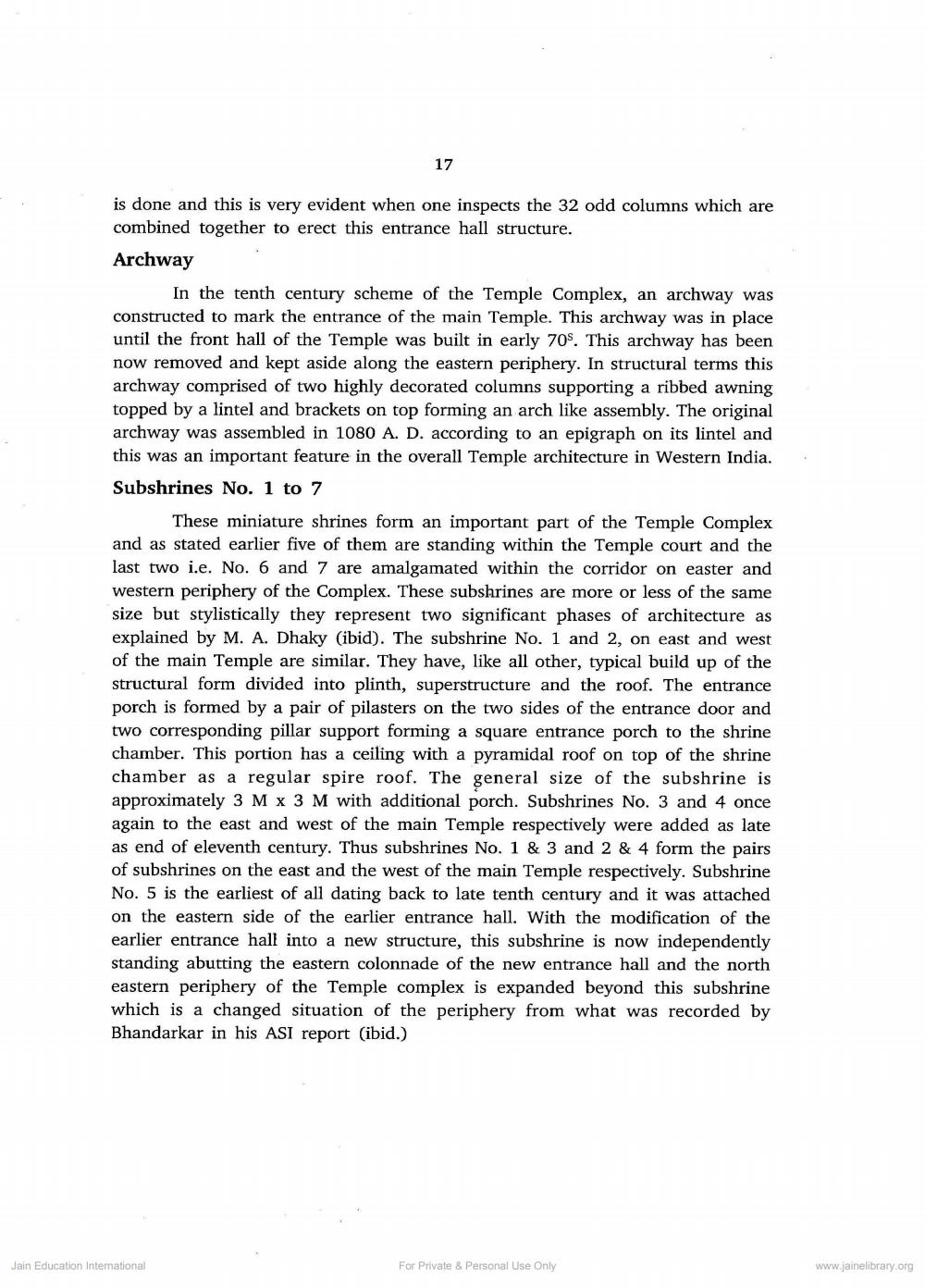________________
17
is done and this is very evident when one inspects the 32 odd columns which are combined together to erect this entrance hall structure. Archway
In the tenth century scheme of the Temple Complex, an archway was constructed to mark the entrance of the main Temple. This archway was in place until the front hall of the Temple was built in early 70$. This archway has been now removed and kept aside along the eastern periphery. In structural terms this archway comprised of two highly decorated columns supporting a ribbed awning topped by a lintel and brackets on top forming an arch like assembly. The original archway was assembled in 1080 A. D. according to an epigraph on its lintel and this was an important feature in the overall Temple architecture in Western India. Subshrines No. 1 to 7
These miniature shrines form an important part of the Temple Complex and as stated earlier five of them are standing within the Temple court and the last two i.e. No. 6 and 7 are amalgamated within the corridor on easter and western periphery of the Complex. These subshrines are more or less of the same size but stylistically they represent two significant phases of architecture as explained by M. A. Dhaky (ibid). The subshrine No. 1 and 2, on east and west of the main Temple are similar. They have, like all other, typical build up of the structural form divided into plinth, superstructure and the roof. The entrance porch is formed by a pair of pilasters on the two sides of the entrance door and two corresponding pillar support forming a square entrance porch to the shrine chamber. This portion has a ceiling with a pyramidal roof on top of the shrine chamber as a regular spire roof. The general size of the subshrine is approximately 3 M x 3 M with additional porch. Subshrines No. 3 and 4 once again to the east and west of the main Temple respectively were added as late as end of eleventh century. Thus subshrines No. 1 & 3 and 2 & 4 form the pairs of subshrines on the east and the west of the main Temple respectively. Subshrine No. 5 is the earliest of all dating back to late tenth century and it was attached on the eastern side of the earlier entrance hall. With the modification of the earlier entrance hall into a new structure, this subshrine is now independently standing abutting the eastern colonnade of the new entrance hall and the north eastern periphery of the Temple complex is expanded beyond this subshrine which is a changed situation of the periphery from what was recorded by Bhandarkar in his ASI report (ibid.)
Jain Education International
For Private & Personal Use Only
www.jainelibrary.org




